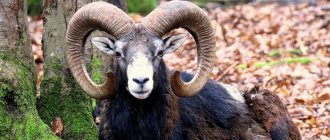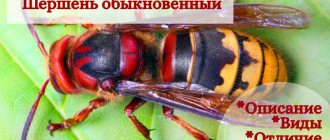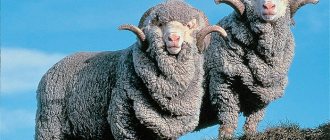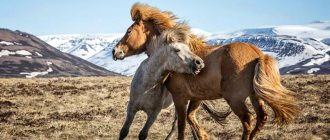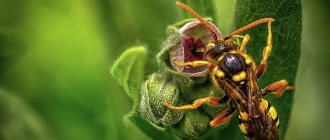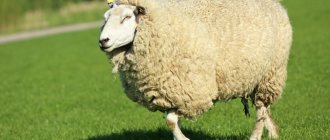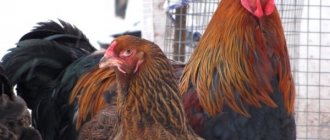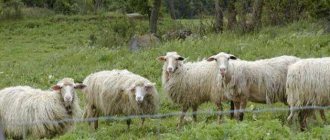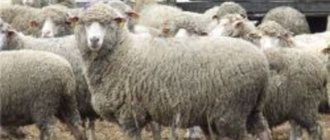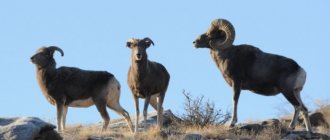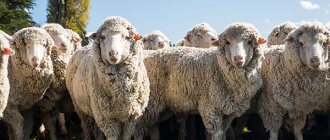Origin
Fat-tailed sheep were first mentioned in the 3rd millennium BC. All evidence of the presence of such animals was found in Asian countries, while in Europe at that time there were simply no meat-and-fat animals. Experts explain this by the poor feed resources inherent in the states of the Central Asian region.
The main feeding grounds were pastures with sparse and nutrient-poor vegetation, so animals were selected in such a way that on this poor food they could gain weight and store fat.
In addition to these factors, an important reason for the popularity of fat-tailed animals in this region was the lard they produced, which made it possible to preserve the resulting meat in hot climates. This was especially appreciated by nomadic peoples.
Since its appearance, the distribution area of the fat-tailed varieties has not increased much. This is explained by the specificity of such sheep breeds and the differences in cultures and mentalities of different regions of the world.
Meat-fat types of sheep were and are reluctantly bred both in Russia and in other European countries. This is due to the low fertility of such animals and differences in the gastronomic tastes of the populations of Europe and Asia.
Now experts are making attempts to increase the number of tallow animals, but so far they have not achieved much success.
As it turned out, fat-tailed breeds are poorly suited for intensive methods of modern farming and many modern technologies are not applicable to them.
Factors affecting lamb weight
There are several factors that can have a strong impact on the weight of a ram:
- Breed . If you breed sheep for the purpose of producing meat, then immediately purchase livestock of meat breeds. For example, if you buy Huesalan sheep, you will not be able to get the desired meat and lard from them, since their average weight is only 18 kilograms. The record holders for gaining meat and fat mass are meat-fat breeds.
- Age . A ram is completely ready for slaughter at the age of 3-4 years. It is during this period that he gains his maximum mass. But a four-month-old lamb is also ready for slaughter, but its weight will not exceed 30 kilograms.
- Floor . Males always weigh more than females.
- Conditions of keeping and feeding . Sheep are not the most fastidious animals and are able to feed on hay alone, but adequate nutrition directly affects carcass weight and meat quality.
What is different about a fat-tailed ram?
Photo:
The main distinguishing feature of fat-tailed sheep is the fat sac located in the sacral region.
This bag is called fat tail, which is where the name of the animals and the entire direction of the species comes from. The fat tail is a storehouse of nutrients, fat, and moisture.
When suddenly difficulties arise in obtaining food or water, the animal uses up these reserve elements in order to survive.
Interesting! Fat-tailed sheep are often compared to camels, which use their hump to “storage” water and nutrients.
The size and weight of the fat tail can be completely different - small, medium, large. Of course, the goal of every breeder is to get the maximum fat tail, and that is, a large fat tail, weighing 15-20 kg.
But such masses are quite rare and only in favorable conditions; most often the weight of the fat tail varies between 5-10 kg.
Compound
Not all types of fat tail fat are equally healthy. The qualities depend not only on the breed of sheep, but also on the gender of the livestock.
In young sheep, fat tail fat has the following composition:
- Monounsaturated, polyunsaturated and saturated fats - 97%.
- Water - 0.3%.
- Vitamins, mainly group B, but D and E are also present, PP - 2%.
- Cholesterol belonging to the “good” type. This type of cholesterol is important for the body, as it promotes brain activity and improves cell regeneration. The cholesterol content in fat tail fat is 2 times lower than in beef and 4 times lower than in pork.
- Microelements: selenium, chlorine, phosphorus, sulfur, zinc, magnesium, iodine.
- Beta-carotene and natural lanolin. The last element makes fat tail fat the most valuable for cosmetology.
- Acids: stearic, margaric, palmitic, pentadecanoic, myristic, lauric and capric.
- Omega-6 and omega-3, which are necessary to strengthen blood vessels.
Description
There are many breeds of fat-tailed sheep, each of which has its own physique, character, advantages and some disadvantages.
But if you compare not different fat-tailed breeds, but fat-tailed sheep with wool and meat sheep, then you can find certain external features of these animals:
- Fat-tailed sheep are always large. The height of a ram at the withers is about 110 cm, and that of a sheep is 75-90 cm.
- The weight of the animal can range from 60 kg (female) to 150 kg (males).
- The head is narrow and small with a hump on the nose.
- The ears are long and usually hang down.
- horns , but there are exceptions.
- All representatives of the species have a fat tail
- The fat-tailed ram has a tail of medium length, about 9-10 cm.
- The coat is thick, but always coarse, hard and short, there is no fluff.
- Color depends on the breed. Most often there are red ones, less often – brown, dark brown, black, gray, white individuals.
Where did fat-tailed sheep breeds come from?
This breed appeared in hot and arid Asia several centuries, and possibly several dozen centuries ago. Scientists still do not agree on whether fat-tailed animals were bred on purpose or by accident. Representatives of this species received their name due to the weighty bag of fat called the fat tail. It is located on the back of the body; it can reach the legs in various ways.
The fat tail contains reserves:
- vitamins;
- minerals;
- water.
The use of these reserves occurs if nutrition does not allow maintaining the optimal state of the body. This often happens during hot, dry summers and long winters in the absence of pasture. The weight of the fat sac can reach more than 30 kg with proper feeding.
These individuals are currently grazed in the Crimea and the North Caucasus, as well as in the steppe regions of Russia and Kazakhstan. All animals of this species are called fat-tailed due to the impressive deposits of fat on the tail.
Fat-tailed sheep, photos of which can be seen on the website, have strong long legs and a fairly powerful torso. As a rule, there are no horns, but individuals with small horns, mostly males, can be found. The head is slightly elongated, narrow and small. There is a hump on the nose and drooping ears. Females weigh about 60-70 kg, males - 70-80. However, much larger sheep are also found.
The wool is quite thick and tough, varies in color. There are colors of red, brown, gray and black. An individual can be painted in only one color; two or more colors are not found.
Breeds
In the southern countries where fat-tailed sheep are bred there are many popular breeds. They have certain species characteristics and breed characteristics that set them apart.
Gissar breed of sheep
Most often found in Uzbekistan and Tajikistan. The average weight of a female is 89.9 kg, and a male is up to 150 kg. Only young individuals are slaughtered.
The animals are dark red in color and have coarse fur. Trimmed within 1.9 kg.
Edilbaevsky sheep
They have strong bones and a strong immune system. Females weigh up to 60 kg, males – up to 120 kg. The coat color is most often black or red. The clipping is about 3 kg per individual. Young animals have a pleasant taste, tender meat.
Females are capable of producing up to 110 liters of high-fat milk during the lactation period. Distributed mostly in Tatarstan, Bashkiria, Kazakhstan, Saratov region of Russia.
Interesting! Black Edilbaev rams and sheep have the largest tails and an abundance of wool, unlike the red representatives of the breed.
Kalmyk fat-tailed sheep
Bred in China and Mongolia. The weight of a ram is within 115 kg, of a female – 75 kg. They have excellent quality meat and relatively soft wool.
At the same time, the softest fleece is produced by animals of white and black color. Approximately cut to 3.9 kg.
Sarajin ram
Bred in Turkmenistan. Males weigh up to 90 kg, females - up to 60 kg. The fat tail has a mass of 6-7 kg. These sheep produce good fleece, the shearing amount is 2-3 kg/individual. Animals that have reached weight are allowed to be slaughtered.
Main characteristics and appearance
The fat-tailed sheep looks very unusual, not only because of the fat bag under the tail. The height of an adult can reach 1 meter, while the animals' legs are thin and thin, and the head is completely devoid of horns. The average weight of females is 70 kg, and that of males is 90 kg (Figure 3).
Note: Scientists have not been able to accurately determine the origin of fat-tailed sheep. The only available information is that such rams first appeared in Central Asia. Some scientists claim that the breed was tamed by man, while others are of the opinion that fat-tailed sheep are a product of folk selection.
Regardless of the species, fat-tailed animals have some common characteristics:
- Most individuals have no horns at all, and their legs are long and appear thin, but in fact they are strong, as the animals can walk many kilometers with minimal nutrition.
- The head is small, elongated forward, narrow and with a small hump on the nose.
- Both males and females have long, floppy ears.
- The weight of individuals depends on gender. In females this figure varies from 50 to 70 kg, and in males it can reach 100 kg.
- The tail is small, consists of 5-6 vertebrae and is almost completely covered with thick hair.
Figure 3. Fat-tailed breeds cannot be confused with others due to their characteristic appearance.
The coat color of purebred animals is always monochromatic, but can be very diverse: gray, black, brown and even red. But the main thing is the meat of fat-tailed sheep, which has significant benefits for the human body. Fat tail fat, which is used to prepare many dishes and is used in folk medicine, is also valuable.
Productivity
sheep
have very good productivity. The animal is valued for many qualities, which is why it is in great demand in hot countries.
Fat tail is the main value obtained from the animal. In countries where fat-tailed breeds have been bred for centuries, this fat sac is highly valued for many reasons.
It is used in many industries, medicine, cosmetology, and cooking. In addition to the fat tail, wool is also obtained from rams and sheep. But since it is very rough, it is unprofitable to put it into mass production (too much waste and low quality of the resulting threads).
As a rule, felt products, rugs, blankets, felt boots, carpets and similar things are made from the wool of these animals.
The fat-tailed sheep produces a lot of meat. It has a pleasant taste, soft and tender, but most importantly, it is very expensive. The texture of the meat depends on the age of the animal - the younger the better.
Gaining muscle mass occurs quickly. Already at 6 months the ram weighs approximately 60 kg.
Important! Fat-tailed sheep can be kept on pastures around the clock, so in terms of feeding they are very profitable - the main thing is to find good pasture!
Dairy sheep can provide the breeder with a lot of good milk.
The fact is that from the first days of life, young animals can eat pasture in addition to milk, so a certain amount of milk (up to 50 liters) can be collected from sheep and sold or used for processing (cottage cheese, cheese, butter, fermented milk products).
Another method of earning money when breeding fat-tailed rams is mating. Not every herd has a good stud ram.
As a rule, these are the largest, healthiest and strongest individuals. They are in high demand, so you can bring together animals from different herds and make a profit from it.
Feeding rules
The fat-tailed sheep eats a variety of foods and is particularly unpretentious in its food, but it is important to take care of the quality of the product itself. Eliminate rotten hay and frozen or rotten vegetables from the animal’s diet. In the summer there is no need to feed the animals; they feed exclusively on pasture. Closer to autumn, sheep begin to be driven indoors and fed a little, increasing the norm for winter.
In summer, sheep feed exclusively on pasture
In winter, food is given three times a day, in the morning it should be hard food, special supplements at lunch, and hay is suitable in the evening. Young sheep will readily eat root vegetables. There are small requirements for hay; over the years, this breed has become accustomed to certain pastures, so hay cut in a forest or swamp can cause poisoning. Make sure your animal has access to clean drinking water.
Advantages and disadvantages
Fat-tailed sheep, like any other animals, have a number of characteristic features and characteristics. Some of them are positive, while others, on the contrary, are negative.
One way or another, before you get such animals, you should familiarize yourself with all their pros and cons.
Thus, the advantages of fat-tailed animals usually include the following characteristics:
- High level of endurance - livestock breeders, scientists, and veterinarians report that animals can overcome enormous distances (up to 500 kilometers);
- Unpretentiousness in care - keeping rams and sheep does not require a lot of effort on the part of humans;
- The ability to quickly gain weight is beneficial for slaughter;
- The ability to withstand hunger thanks to the fat tail;
- Easy and quick birth – important for breeding;
- A large amount of wool that can be obtained from each individual;
- A person can use several animal derivatives at once: meat, lard, milk.
However, despite such a variety of positive features, there are also some disadvantages.
Among them are usually distinguished:
- helplessness;
- impossibility of independent existence;
- the need to constantly be in the herd.
In this way, you can be convinced that animals have much more positive traits than negative ones. That is why they have won such great love among livestock farmers around the world.
Life of sheep in a flock
Sheep are very slow-witted animals. They often cannot cope with the simplest tasks. For example, they may refuse to enter their pen if the gate is moved. Sheep do not have the hierarchy that is characteristic of cattle. All individuals in the herd are practically equal. Animals do not have a permanent leader. By the will of man, his function is performed by goats, and in the southern territory of the country - donkeys. Fat-tailed rams always follow the leader obediently. It is very difficult to control a flock without a leader, for example, to move it in bad weather or to drive it into a pen. Rams are afraid and do not like everything new. This quality is well reflected in the Russian folk proverb “He leaned his horns like a ram into a new gate.”
How much does a fat-tailed sheep cost? The cost of live weight is from 150 rubles. for 1 kg.
Content
In order for your fat-tailed rams and sheep to have the opportunity to grow and develop properly, and, as a result, bring you benefit and profit, it is necessary to observe certain conditions for their maintenance.
First of all, it is necessary to take care of the presence of a large and spacious area that will serve as a pasture. This is necessary due to the fact that animals must spend the main period of time outdoors, free grazing.
It should be taken into account that forests and swamps will not be able to play the role of pasture, which is due to the high acid content in the pasture.
If animals regularly eat such food, then poisoning will inevitably occur in their body. To make grazing as convenient as possible, it is necessary to provide your herd with security and a leader.
If we talk about approximate periods, grazing is considered optimal for 200 days a year. The rest of the time (during winter) you need to take care of creating a dry shed.
Pay special attention to humidity levels and temperature conditions. If you keep fat-tailed animals (both adults and lambs) in a cold and damp room, then there is a high probability of developing colds.
To avoid various kinds of ailments, especially infectious ones, you need to regularly (2 times a year) give your animals vaccinations specifically designed for prevention.
In addition, do not forget to periodically show your sheep and rams to the veterinarian.
Another necessary activity is wool processing. Treatment is intended primarily to protect animals from parasites.
Shampoos, sprays and other preparations are used as disinfectants. Also, do not forget to worm your animals.
The diet of animals deserves special attention. In general, they are quite picky about food, however, fat-tailed animals should be fed with simple, but high-quality food.
For two hundred days a year, during which animals graze, there is no need to worry about food - sheep and rams eat pasture. Despite this, it is necessary to maintain the water balance of animals by providing them with free access to a large amount of water.
In winter, when grazing is not carried out, domestic animals need to be fed hay and grain. It is believed that the daily norm for one individual is approximately half a kilogram of grain and 2 kilograms of hay. In addition, vegetables and root vegetables should be included in the diet.
Growing
The peculiarity of the mountain breed of animals is their unpretentiousness in food. In addition, keeping sheep does not require any major outbuildings. Some farmers keep animals under a regular canopy, which can protect the flock from precipitation and cold. The main point regarding the maintenance of hissars will be free grazing, since the peculiarity of fat-tailed animals is a nomadic lifestyle.
If sheep are sometimes kept indoors, the breeder will need to provide good ventilation inside. This is due to the release of a large amount of heat by the animals themselves. Poor air circulation will cause the sheep's wool to become damp, which will negatively affect the well-being of the animals. Animal sheds will need to be regularly cleared of excrement, as well as disinfected annually.
Care
Keeping hissars involves caring for their limbs. Hoof trimming is not necessary, but daily exercise is required. Otherwise, the blood supply to the hooves will be disrupted, which will lead to illness and weakness of the animal. With weak immunity and increased dampness, hooves can rot. Therefore, the breeder should monitor the condition of the limbs of his sheep.
In addition to regular and long walks, sheep will need a dry and clean bed, especially for the ewes and young offspring. For animals, bedding is made from vines or dry hay. Caring for hissars requires shearing and disinfection of the entire livestock. Typically, such events are held once every six months: in May and September.
Sheep can be sheared for the first time when they reach five months of age. However, the temperature outside should not be lower than +15°C. It is not recommended to feed the animal 12 hours before the planned haircut. For work, a machine or scissors are used; at the end of the procedure, the sheep is treated with an antiseptic.
Nutrition
An important condition regarding the diet of sheep is the fortification of food and constant access to water. Gissars can be fed hay and cereals even in the winter months. To avoid a deficiency of micro- and macroelements, animals are offered mineral-containing slimes, which are placed near drinking bowls. This breed can be fed food waste, such as peelings from root vegetables, vegetables or fruits. And also sheep and rams of the Gissar breed eat bread well.
It is recommended to place food of different types, if the animals are not out for a walk, in special feeders. They should be above ground level to prevent animals from trampling or overturning food containers. As for hay, feeders for it should be placed even higher.
For hissars, pastures are a place to search for food all year round. Usually, in the warm season, flocks of sheep graze in the foothills, and with the arrival of winter, the animals move to the mountainous part, where there is not much snow. If there is fresh grass, then the sheep will not need additional nutrition. In winter, pasture should be replaced with hay. The optimal amount of hay for one individual will be 1.5–2 kg.
In addition, it is recommended to add about 500–600 g of crushed grain to the diet. The rock is positive for corn silage. Sheep also need to be given salt to replenish their mineral reserves. For one individual, the daily requirement of table salt will be 10 g.
For better absorption of food, the diet of sheep must be mixed, so roughage must be alternated with succulent feed. The last type of food is best given to animals in the first half of the day along with water. With free grazing, there is a possibility that animals will experience nutritional deficiencies. This is especially true on poor pastures. In this case, the sheep are supplemented with grain; the daily norm for one animal will be 300–400 g of grain.
Breeding
Breeding fat-tailed sheep can become quite a profitable business. However, before you start organizing your own business and purchasing animals, you should familiarize yourself with the features and rules of their breeding.
First of all, you need to understand that in order for such an activity to make sense and be profitable, you need to purchase a livestock that will consist of at least 12 animals.
This is justified by the fact that 1-2 rams will not bring you enough fat, milk or wool, but at the same time they will have to be properly cared for. That is why it is believed that it is much more profitable to purchase a small herd at once.
In order to begin direct breeding, you need to wait until the fat-tailed females reach sexual maturity. This usually occurs at 5-8 months of the animal’s life.
In general, the mating process can be carried out at any time, however, late autumn is considered the most favorable period.
If you plan to perform artificial insemination, it is recommended to carry it out during the same season.
Your herd of fat-tailed sheep should contain several males at the same time, who will serve as a producer.
The ideal option is a situation where you have a pair of main males on your property, as well as several spare males.
The pregnancy process in fat-tailed sheep lasts about 5 months, and the birth itself occurs quite quickly - the maximum duration is 60 minutes.
From 1 to 5 lambs can be born at a time, but the latter case is more an exception and rarity than the rule.
After the lamb is born, some mandatory procedures must be carried out.
You immediately need to clean his nose and mouth (mucus usually accumulates in these places), and if necessary, you need to puncture the amniotic sac. After this, the baby is returned to the mother, placed next to the nipple.
Not only the mother, but also any other uterus can feed a newly born lamb. This is important if a sheep has given birth to several babies at once, but does not have the ability to provide milk for all of them.
Varieties
In general, there are 4 subspecies of fat-tailed sheep in nature. Let's take a closer look at each of them and get acquainted with their individual characteristics.
Eldibaevskaya
Fat-tailed sheep of this variety are common in Bashkiria, Kazakhstan, Tatarstan, as well as in Saratov and Orenburg.
Pets of the Eldibaevsky breed are distinguished by a rather powerful physique and weigh a lot.
On average, the weight of rams can reach 110 kilograms. However, such a mass is far from the limit: depending on the diet, as well as living conditions, it can be greater.
Traditional color options: black and red. Moreover, black suits are much more valued among livestock breeders, because they are capable of not only growing a massive bag of lamb fat, but are also valuable due to their wool and milk. For example, in 1 year from one black fat-tailed sheep you can get about 3 kilograms of wool, and more than 120 liters of milk (dairy products are usually made from it).
Kalmytskaya
This variety is native to eastern countries, namely Mongolia and China. Of course, over time, this breed spread more widely, including our country. In general, the Kalmyk breed of fat-tailed sheep is considered the most widespread and famous. This popularity is due, first of all, to the fact that they are the largest.
Accordingly, you can get a huge amount of benefits from the Kalmyk ram.
In addition, many livestock breeders separately highlight the wool of sheep of this breed, since it is considered the softest and most pleasant to the touch. In a year you can get about 4 kilograms of such wool from one animal. The color of the Kalmyk breed is quite standard: white or black.
Gissarskaya
This breed is not natural, it was specially bred by scientists. The distribution range of Gissar sheep is considered to be Uzbekistan and Tajikistan. In our country you can also find representatives of this breed, but they are not very common and are quite rare.
The wool of Gissar sheep has a red color in its various variations and shades.
The weight of an adult animal can reach 150 kilograms (record figures), the average weight is 90-120 kilograms. Representatives of this variety are not very “fertile” in terms of wool. You can get only 2 kilograms of it in a year. In this regard, as well as for some other reasons, young animals of this breed are most often used as meat.
Saradzhinskaya
This breed comes from Turkmenistan. It is believed that Saradzhin rams are one of the smallest, since their weight traditionally does not exceed 90 kilograms, and the size of the grease sac can reach 7 kilograms.
If you plan to slaughter an animal, this should be done already at the moment when the weight of the ram has reached 37 kilograms.
The unusual characteristics of the breed include its coat. The fact is that it has an original braided structure, and the white color is endowed with a special shine and glossiness. The components of wool are fluff, awns and dead hair.
What to cook from lamb tail?
There are many recipes for dishes with the addition of fat tail; the product can be salted, boiled, fried, cooked lula kebab, added instead of butter to vegetable and meat dishes, pilaf, and baked goods with meat.
Pickling
Before salting, the lard is washed and dried. You can leave it as a 1-1.5 kg piece or cut it into 3 cm thick plates.
A mixture for salting 1 kg of fat tail is prepared from: a head of garlic; 1 soup spoon of herbs; half a small spoon of curry; half a teaspoon of black pepper; 3 tbsp. l. salt; spices to taste.
When salting a piece, multiple punctures are made in it with a knife, which are filled with the mixture, and then the lard is rubbed on top. The piece is placed in a glass container, covered and left in the refrigerator for 3-5 days.
The chopped plates are rolled in spices, placed tightly in a bowl, covered, and left in the cold for 2-4 days.
Pickling
Marinated fat tail is prepared simply; for this, a piece is cut with an accordion and placed in boiling salted water.
After 30 minutes, take out the lard, cool it, coat it with salt, pepper, and garlic. After 2 hours, the product is placed in the refrigerator for a day.
Next, the fat tail is cut into small pieces and sprinkled with red pepper, after which it is ready to eat.
The benefits of fat tail fat
Lamb fat is rightfully considered one of the most useful components of animal origin. All sheep fat is used, but fat tail fat is especially valuable. It contains the maximum concentration of beneficial microelements and nutrients.
Fat tail fat is widely used in almost all areas of life. Detailed application is presented in the table below.
Table No. 5. Areas of application of fat tail fat
| Application area | How to use |
| Cooking | 1. National dishes. Fat tail fat reveals a full range of flavors in many Caucasian and Asian dishes. As a rule, they use sheep meat in combination with fat. The most popular dishes are pilaf, shurpa, bozbash, samsa. And cooks get rid of the specific smell of lamb using spices. 2. A flavorful snack. Fat tail fried in a dry hot frying pan turns out to be very tasty. It is eaten together with flatbreads as a separate dish. Fried fat tail is an excellent hearty snack for strong drinks, which will help you not get drunk for a long time. 3. Excellent preservative. Adding fat tail will keep any dish fresh for a long time, even in hot weather. Fat stores well in the freezer if it is cut into small pieces and packaged. |
| Medicine | 1. Getting rid of headaches. For a long time, fat tail fat was spread in a thin layer on the forehead if the head began to hurt. After some time the pain went away. 2. Healing of wounds and disinfection. Due to its beneficial properties, fat is an excellent disinfectant. It was placed in the wound of horsemen who were wounded in battles. There was no festering, and the wound healed quickly. 3. Treatment of pneumonia. Fat can completely put a person with tuberculosis on his feet. As a treatment, he is stripped to the waist and covered with large pieces of fat tail from the neck to the waist for several hours a day. The disease subsides within a week. 4. Treatment of coughs and colds. A healing ointment “dumi yad” is prepared from fat tail, which in its medicinal properties is superior to badger and bear fat. It is used for rubbing against colds. Bronchitis and cough are treated with compresses: fat is melted and a napkin is moistened with it, which is applied to the chest. The patient is also given a cocktail of hot milk and 1 teaspoon of fat tail. 5. Elimination of swelling and pain in joints. Rubbing with “dumi yad” ointment and melted fat tail fat helps fight these ailments. |
| Cosmetology | 1. When melted, it helps fight fatty acids. 2. Reduces sweating. Hot fat is mixed with sunflower oil and garlic, and then rubbed into problem areas. 3. Fights irritation and inflammation on the skin. 4. Used as a nourishing cream for dry and flaky skin. |
Interesting! In Caucasian and Turkic settlements, pieces of fat tail are given to small children instead of pacifiers. The kids suck it with pleasure and stop crying.
Smoked fat tail fat
The use of fat tail in cosmetology and medicine
Fat-based products are used to rejuvenate, brighten the skin, and even out the tone. The product is effective in the treatment of colds, they make wraps, add 3 drops to herbal tea.
It gets rid of:
- diseases of the kidneys, liver, gall bladder;
- fights gastritis, ulcers, thrombophlebitis;
- restores potency.
Kurdyuk saturates the body with vitamins, acids, microelements, and normalizes blood sugar levels. It is part of the Dumi Dyat oil; its medicinal properties are not inferior to badger and bear fat. To use the fat, the fat tail is not salted.
Giant rams
The maximum weight of a ram that was recorded is 247 kilograms. Such a giant was shown to the world by one married couple who kept such a giant in Oregon (USA).
But there are only a few such rams in the world, and the real record holders among ordinary sheep are considered to be such breeds as the Gissar and Edilbaevskaya. In the former, the weight of an adult male is 170 kilograms, and in the latter, about 120 kilograms. But when cutting both the first and second breeds, too much fat comes out, so farmers prefer to breed the following species:
- Lincolns;
- Shropshires;
- Romney March;
- Hampshires;
- Kutums (Katym smooth-wool sheep).
Useful tips for beginning sheep farmers
Interesting and important facts that a novice sheep farmer should know:
- Sheep lambing is high - 3-5 lambs;
- childbirth takes place in 40 minutes, in 95% of cases there are no complications;
- The lamb should receive its first food within 2 hours of birth;
- acquire lambs from 4 months of age;
- Sheep are mated from 1 year of age;
- the ram is separated from the ewe at 5 months (the animals are kept separately);
- feeding should be done 2 times a day.
Lifespan
Biological capabilities allow sheep to live up to 25 years. In captivity, they live on average to 12-14 years. The greatest productivity is recorded when the age reaches 2-7 years - depends on the breed and breeding goals.
Shearing
Haircuts are carried out in spring and autumn. Fine and semi-fine wool do not shed in summer. Lambs born in the spring should be sheared for the first time a year after birth.
Important! 15–20 days after shearing, you need to wash the sheep with a disinfectant.
Caring for Newborn Lambs
The peculiarities of caring for newborn lambs are that they need to be wiped off and given to the uterus. She performs a lick. The lamb must eat within 120 minutes of birth.
It is important to consider that the queen can only feed 2 babies at a time. If there are 3-5, then the farmer must bottle feed the rest. Grass and vegetables are not given to newborn lambs.
Diseases
Fat-tailed sheep have a fairly strong immune system. But if not properly cared for, they can be affected by the following ailments:
- Helminthiasis . This disease is considered one of the most common. Occurs when the rules for keeping the animal are not followed. The parasite larvae enter along with food and feed. At the same time, for a long time the animal behaves as usual, it has an excellent appetite and lactation.
- Echinococcosis . This disease occurs as a result of the activity of cestode larvae inside the body. Infection also occurs through water and food. The initial stage is asymptomatic. Only with severe infection can symptoms of the pathological process occur: diarrhea, loss of appetite.
- Bradzot . This disease is one of the most common. Causes severe intoxication of the animal's body. Its essence is acute inflammation of the abomasum. Mortality occurs in 100% of cases. The cause of poisoning is an anaerobic bacillus. It enters the body through food or from an infected animal.
- Infectious mastitis . This is a severe and acute pathological process that leads to inflammation of the mammary glands. Staphylococcus affects its development. Most often, the infection affects females during lactation. This is due to the sheep’s weakened immune system or improper care of it.
Maybe
Anatomy [edit | edit code ]
Fat accumulates on the rump and on the first 3-5 vertebrae from the base of the sheep's tail. Depending on the type of breed and the total weight of the carcass, the fat tail can reach 30 kilograms, although usually its weight rarely exceeds 5-10 kg. Serves for the accumulation of fat during the fattening period and subsequent consumption during the dry period (as in the humps of camels) [2]. The outside of the tail is covered with hair only in the upper part and consists of symmetrically located halves, between which is placed the end of the tail, covered with long, coarse hair. The formation of a fat tail is hereditary, as a characteristic feature of the breed, and is especially pronounced with abundant feeding and favorable conditions for fat deposition. Also, the formation of fat tail depends on local conditions - the salinity of the soil and the characteristics of the herbaceous vegetation on it, suitable for feeding sheep.
Reviews
- Oleg, 39 years old: “Fat-tailed sheep are probably one of the few breeds that can simultaneously produce high-quality meat, lard and wool. I keep the animals in the pasture in the summer, and in the evening I drive them into a barn that I have equipped especially for them. I laid the plank floor, created a space for mother and newborn, and installed drinking bowls and feeders. By the way, they are also picky when it comes to nutrition. During the day they eat green food in the meadow, and in the evening I can give them boiled root vegetables or oats. In winter, I introduce concentrated feed into the diet.”
- Ksenia, 46 years old: “I have had fat tails for 6 years. During this time they never hurt me. I feed them oats, corn, green and concentrated food. Most of all I value this breed for its meat. In young lambs it is very juicy and tender. But in adults it is already a little harsh. And although they are unpretentious animals, their premises should always be dry and clean. The bedding is changed every day using straw.”
Fat-tailed sheep are a valuable breed of domestic animal, because thanks to them you can get wool, meat, skin and lard at the same time. Their cost is not that high, despite the fact that the animals are in good health, are not particularly demanding of care and are highly productive.
How to care
Caring for fat-tailed sheep is not difficult, but it is still necessary to pay due attention to this process.
Feeding
The diet of animals is based on grass. But in autumn and winter - hay. These sheep can achieve excellent feeding even in places with low quality feed and poor nutritional value. But still, it wouldn’t hurt to organize feeding:
- Animals 1 month old can be given 50-100 g of concentrated feed.
- In winter, the diet of young lambs includes 250 g of concentrates.
- Sheep during lactation should be given 300 g of concentrated feed.
But the diet of rams has its own characteristics. It is necessary to increase the nutritional value of food, while reducing its quantity. In summer, males should walk in the best areas. During mating, animal foods such as milk and eggs can be given.
The video shows how fat-tailed sheep are kept:
You will also have to increase the dosage of the concentrate and carry out fortification. In winter, the diet of sheep includes:
- Legumes and cereals (hay) – 2-25, kg.
- Haylage or succulent feed – 1-1.5 kg.
- Concentrated feed – 0.6-0.8 kg.
Conditions of detention
To keep animals, it is necessary to prepare a dry room. At the same time, it should be quite spacious. Regularly monitor your animal's bedding. It is unacceptable for it to have moisture and mold on it, as this causes the development of diseases.
Doors and windows in the room should be located on the south or east side. This will prevent drafts.
You will also have to monitor the fur and hooves of animals. Only bathe them before grooming. It is best to do this in spring or summer. Trim hooves 2-3 times a year. If this is not done, lameness may develop.
By clicking on the link, you can find out the general characteristics of the Czech goat breed.
But what breeds of odorless dairy goats exist, and what they look like, can be seen here.
It will also be interesting to know what the feeding standards are for Nubian goats: //gidfermer.com/zhivotnye/kozy/nubijskie-opisanie-porody.html
And here you can learn more about the existing characteristics of the Alpine goat breed.
